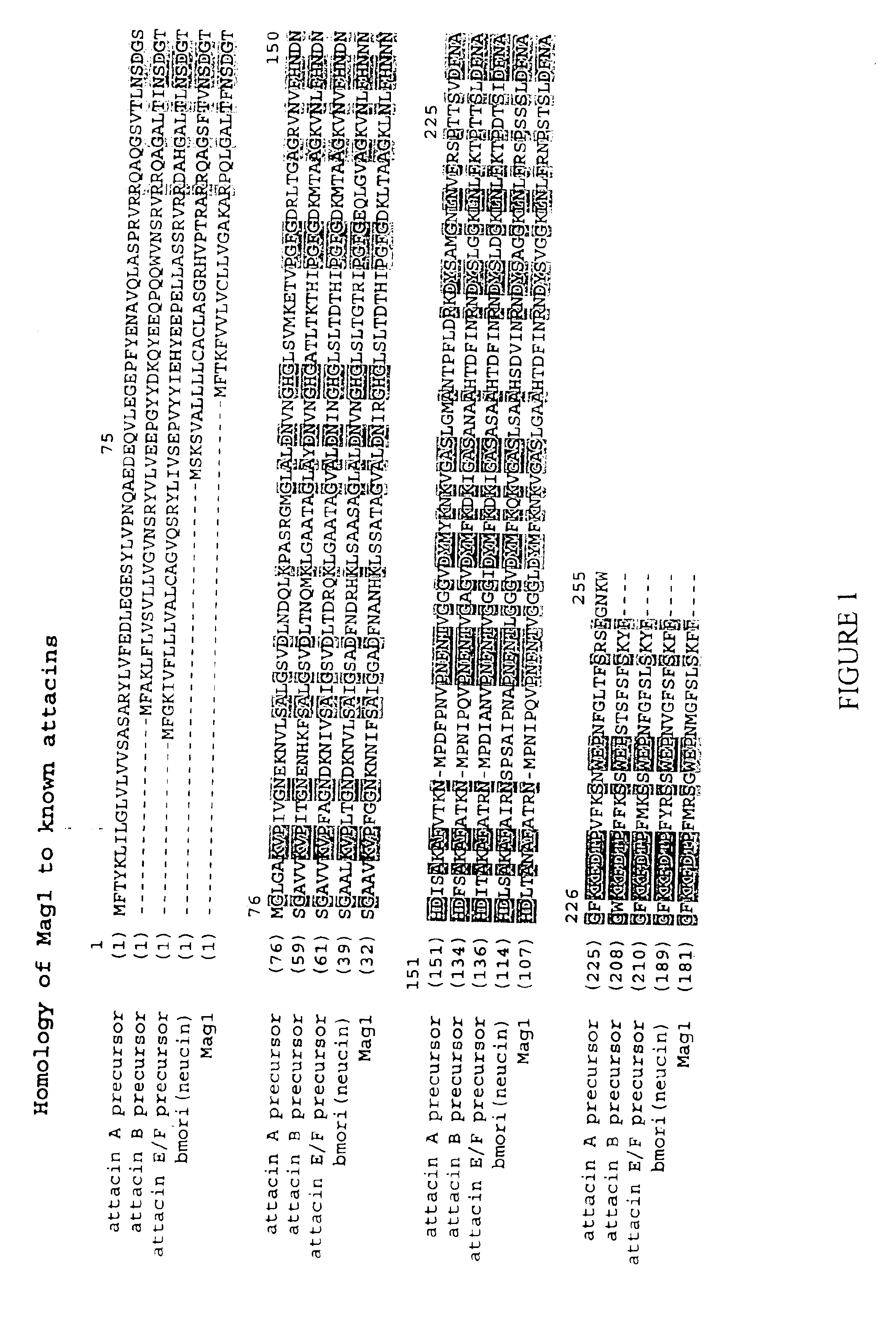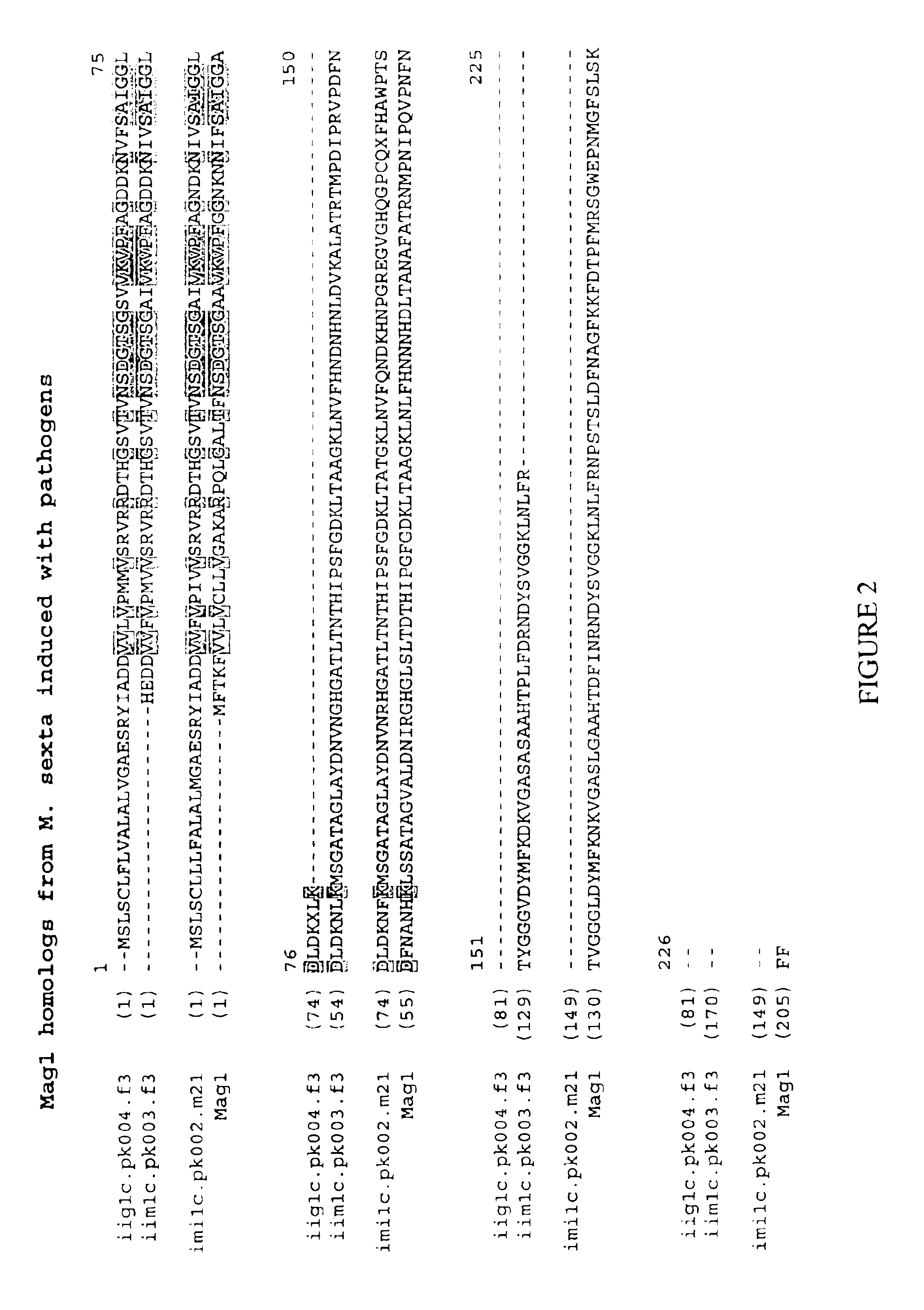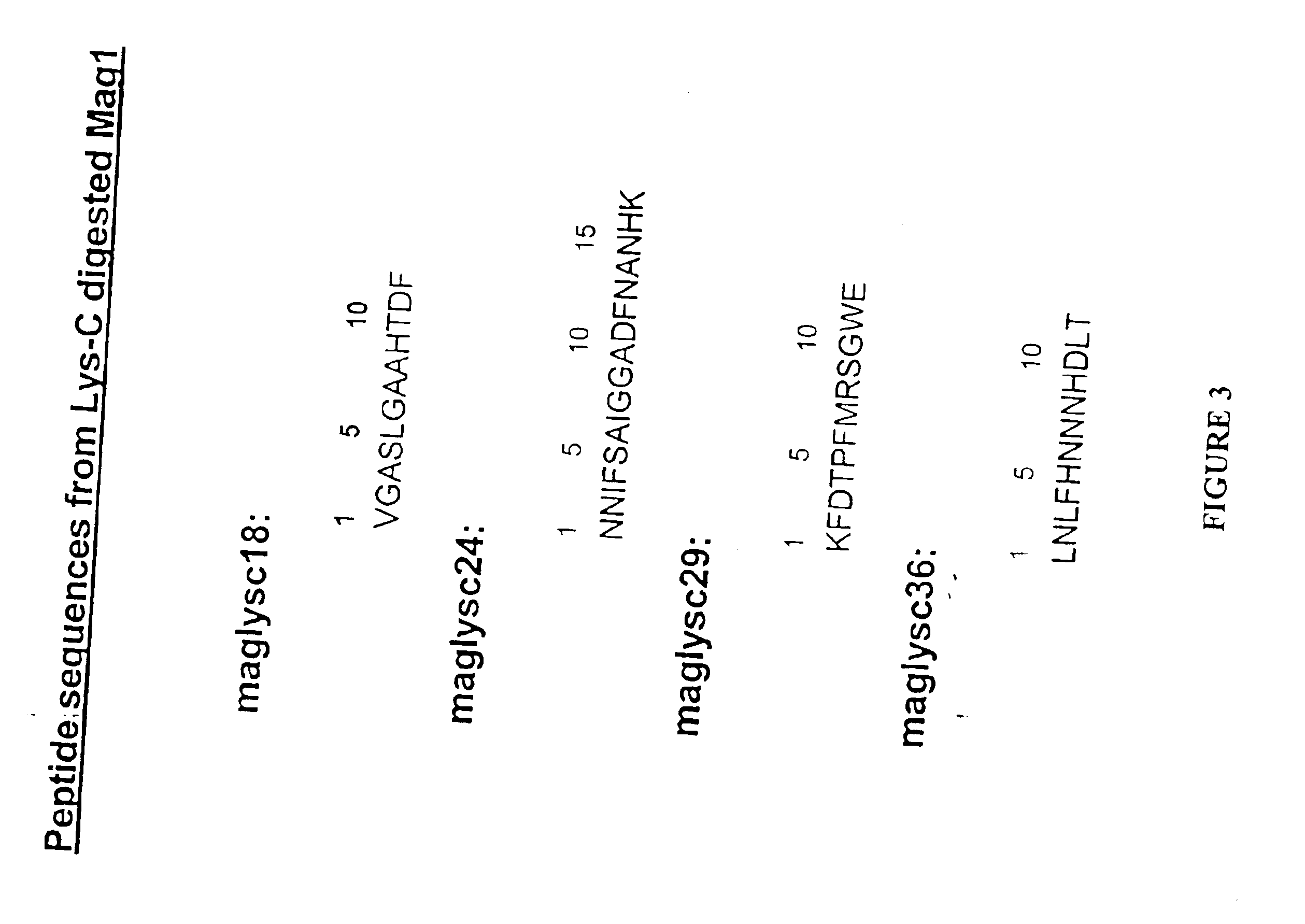Nucleic acid encoding the FUS6 antimicrobial polypeptide of Agrotis ipsilon and its use to enhance disease resistance in a plant
- Summary
- Abstract
- Description
- Claims
- Application Information
AI Technical Summary
Benefits of technology
Problems solved by technology
Method used
Image
Examples
example 1
Bioassay for Fungicidal Activity of Manduca sexta Hemolymph Polypeptides
[0181]After resolution by liquid chromatography (LC), the various pathogen induced M. sexta polypeptide-containing fractions were assayed for fungicidal activity against the plant pathogens M. grisea, R. solani, and F. verticilloides. The LC fractions were first lyophilized in 96-well microtitre plates. A suspension of 100 μl of M. grisea (or other named pathogen), at the standard fungal growth assay concentration (2500 spores / ml), was added to the polypeptide containing microtitre plate wells, and the plates sealed with Borden® Sealwrap™. The plates were then placed at 28° C. in a dark chamber for 24 hours. Hyphal growth was monitored using a dissecting microscope. The polypeptides contained in the wells that lacked hyphal growth, or that displayed reduced hyphal growth compared to control wells, were considered to possess fungicidal activity. Hyphal growth was scored again, 48 hours post inoculation, for a fin...
example 2
Induction of Antimicrobial Response in Manduca sexta
[0182]Fifth instar M. sexta larvae were injected intersegmentally with 20 μl of a highly concentrated suspension of M. grisea hyphae and spores previously scraped from an agar plate colony. The larvae were then placed on fresh diet and allowed to recover. After 24, 48, and 72 hours, hemolymph was collected from the larvae by clipping off a proleg using fine surgical scissors over a sheet of parafilm™. Approximately 1 ml / insect can be collected in this way. The hemolymph was transferred to a 50 ml conical flask and placed on ice while the remaining larvae were being processed. Once all larvae have been processed, phenyl thiolurea was added to a final concentration of 20 mM. Aprotinin was also added to the sample (final concentration 20 μg / ml). The samples were centrifuged (3000 rpm) for 5 minutes to pellet cells. The remaining supernatant (hemolymph) was subjected to solid-phase extraction using Supelco Discovery® DSC-18 solid-phas...
example 3
HPLC-Fractionation of Polypeptides from Magnaportha grisea Induced Manduca sexta Hemolymph
[0185]Hemolymph from M. grisea induced M. sexta larvae (see Example 2) was fractionated on HP-1100 HPLC, using a Vydack C4 (4.6-250 mm) column (FIG. 3). A gradient system was used to elute bound proteins. The gradient conditions are indicated below. Fractions were collected at one minute intervals into a 96-well microtiter plate and were assayed for fungicidal activity against M. grisea (see Example 1).
[0186]This protocol was also followed for fractionation of polypeptides from B. bassiana and R. solani induced M. sexta hemolymph. The bioassay for fungicidal activity (Example 1) was also conducted using the plant pathogens R. solani and F. verticilloides.
[0187]
Gradient Conditions:SolventSolvent A: 5% Acetonitrile, 0.1% TFASolvent B:95% Acetonitrile, 0.1% TFAFlow rate0.6 ml / minGradient0-60% B over 70 minutes
PUM
| Property | Measurement | Unit |
|---|---|---|
| Fraction | aaaaa | aaaaa |
| Fraction | aaaaa | aaaaa |
| Mass | aaaaa | aaaaa |
Abstract
Description
Claims
Application Information
 Login to View More
Login to View More - R&D
- Intellectual Property
- Life Sciences
- Materials
- Tech Scout
- Unparalleled Data Quality
- Higher Quality Content
- 60% Fewer Hallucinations
Browse by: Latest US Patents, China's latest patents, Technical Efficacy Thesaurus, Application Domain, Technology Topic, Popular Technical Reports.
© 2025 PatSnap. All rights reserved.Legal|Privacy policy|Modern Slavery Act Transparency Statement|Sitemap|About US| Contact US: help@patsnap.com



